Key Takeaways
- Personalized learning paths adapt to individual skills, goals, and learning styles for maximum engagement and effectiveness.
- They use data, AI, and assessments to deliver tailored content and track learner progress.
- Ideal for corporate training, education, and upskilling, these paths enhance performance and learning outcomes.
In today’s fast-paced, skills-driven world, one-size-fits-all learning models are no longer effective. As individuals increasingly demand learning experiences that reflect their unique goals, strengths, and knowledge gaps, the concept of personalized learning paths has emerged as a transformative solution. Whether in corporate training environments, higher education institutions, or online learning platforms, personalized learning paths are becoming the cornerstone of modern education and professional development.

At its core, a personalized learning path is a structured, tailored learning journey designed to align with an individual’s specific needs, abilities, and aspirations. Unlike traditional education methods that follow a fixed curriculum for all learners, personalized learning paths use data, assessments, and technology to deliver the right content to the right person at the right time. This learner-centric approach not only enhances engagement and retention but also empowers individuals to learn at their own pace—accelerating skill acquisition and improving outcomes.
As digital transformation reshapes industries, the demand for continuous learning and upskilling is at an all-time high. Companies are investing in personalized learning platforms to develop agile, future-ready workforces. Likewise, educational institutions are leveraging adaptive technologies to create smarter classrooms that cater to diverse learning styles and progress levels. With AI, machine learning, and real-time analytics, personalized learning is evolving from a niche concept into a mainstream educational strategy with measurable impact.
This blog delves deep into the world of personalized learning paths, exploring what they are, how they work, their key components, real-world applications, and the benefits they offer to both learners and organizations. We’ll also discuss the technologies driving this shift, the challenges in implementation, and what the future holds for personalized education.
If you’re an educator, employer, L&D professional, or an individual eager to take control of your learning journey, understanding how personalized learning paths work is essential to staying competitive and relevant. Read on to discover how personalized learning is revolutionizing the way we gain knowledge, build skills, and achieve success in the modern world.
Before we venture further into this article, we would like to share who we are and what we do.
About 9cv9
9cv9 is a business tech startup based in Singapore and Asia, with a strong presence all over the world.
With over nine years of startup and business experience, and being highly involved in connecting with thousands of companies and startups, the 9cv9 team has listed some important learning points in this overview of What are Personalized Learning Paths and How Do They Work?
If your company needs recruitment and headhunting services to hire top-quality employees, you can use 9cv9 headhunting and recruitment services to hire top talents and candidates. Find out more here, or send over an email to [email protected].
Or just post 1 free job posting here at 9cv9 Hiring Portal in under 10 minutes.
What are Personalized Learning Paths and How Do They Work?
- What is a Personalized Learning Path?
- Key Components of Personalized Learning Paths
- How Personalized Learning Paths Work (Step-by-Step)
- Benefits of Personalized Learning Paths
- Use Cases of Personalized Learning Paths
- Technologies Powering Personalized Learning
- Challenges in Implementing Personalized Learning Paths
- How to Create an Effective Personalized Learning Path
- Future of Personalized Learning Paths
1. What is a Personalized Learning Path?
A Personalized Learning Path (PLP) is a tailored educational or training roadmap designed to meet an individual learner’s unique needs, preferences, goals, and pace. Unlike traditional models that deliver the same content to all learners in the same order, PLPs adapt to each person’s existing skills, learning style, and objectives.
This section explores the concept of personalized learning paths in-depth through clearly structured sub-sections, real-world examples, and visual aids to improve comprehension and SEO visibility.
1. Core Definition and Concept
- A personalized learning path is a customized sequence of learning experiences designed based on:
- Individual skill level
- Learning style and preferences
- Career or academic goals
- Performance data and assessments
- Key characteristics:
- Non-linear structure (flexible order of topics)
- Data-driven content selection
- Learner autonomy and pacing
- Ongoing feedback and adjustment
2. Key Features of Personalized Learning Paths
a. Learner-Centric Design
- Focuses on the learner’s background, interests, and goals
- Enables self-paced learning aligned with personal aspirations
b. Modular Learning Structure
- Content is broken into small, flexible units or modules
- Learners can skip, repeat, or customize the sequence of modules
c. Real-Time Feedback and Adjustment
- Adaptive systems recommend content based on real-time performance
- Learning paths dynamically evolve based on progress
d. Goal-Oriented Navigation
- Clearly mapped outcomes such as:
- Gaining a specific skill (e.g., Excel mastery)
- Completing a certification (e.g., Google Data Analytics)
- Achieving role-readiness (e.g., becoming a project manager)
3. Examples of Personalized Learning Paths
| User Type | Learning Goal | Personalized Path Components |
|---|---|---|
| Entry-level employee | Learn Digital Marketing Basics | SEO module → Social media basics → Email marketing → Final project |
| University student | Master Data Science | Python foundations → Statistics → Machine Learning → Capstone |
| Software engineer | Upskill to AI/ML role | Math refresher → Python for ML → TensorFlow tutorials → AI project |
| Sales manager | Improve Negotiation Skills | Communication module → Case studies → Role-playing scenarios → Quiz |
4. Personalized Learning Path vs Traditional Learning Path
| Aspect | Traditional Learning Path | Personalized Learning Path |
|---|---|---|
| Content Delivery | Same for all learners | Customized per learner |
| Learning Pace | Fixed timeline | Self-paced |
| Assessment Method | Standard tests | Adaptive, data-driven assessments |
| Feedback | Periodic, often delayed | Real-time, continuous |
| Learning Goals | Predefined curriculum | Dynamic, based on learner’s needs |
| Technology Use | Minimal | High (AI, LMS, analytics) |
5. Types of Personalized Learning Paths
a. Skill-Based Paths
- Designed around a specific skill acquisition
- Example: Learning “Advanced Excel” for data analysis
b. Role-Based Paths
- Tailored to help learners reach job-role readiness
- Example: Becoming a “Digital Marketing Specialist”
c. Goal-Oriented Paths
- Built with the end goal in mind (certification, promotion, etc.)
- Example: Achieving Google Cloud Certification
d. Behavior-Adaptive Paths
- Uses learner behavior and preferences to guide next steps
- Example: Recommending video vs. text content based on engagement
6. Common Platforms Supporting Personalized Learning
| Platform | Personalization Features |
|---|---|
| Coursera | Adaptive quizzes, goal tracking, course suggestions |
| LinkedIn Learning | Skills assessments, tailored course libraries |
| Udacity | Role-specific Nanodegree programs with real-world projects |
| Moodle (LMS) | Conditional activities, personalized dashboards |
| Docebo | AI-based content recommendations for enterprise learning |
7. Personalized Learning Path Flow (Step-by-Step Chart)
A[Initial Skill Assessment] --> B[Set Learning Goals]
B --> C[Personalized Path Creation]
C --> D[Dynamic Content Delivery]
D --> E[Real-Time Progress Tracking]
E --> F[Feedback & Adjustment]
F --> G[Achievement of Learning Outcomes]
8. Real-World Scenario: How a Personalized Learning Path Works
Scenario: A marketing intern wants to specialize in SEO
- Assessment: Takes a quiz to evaluate existing digital marketing knowledge
- Learning Path Suggested:
- Module 1: Introduction to SEO
- Module 2: On-page optimization
- Module 3: Keyword research tools (SEMRush, Ahrefs)
- Module 4: Content writing for SEO
- Module 5: Google Search Console & Analytics
- Final Assessment + SEO project
- Outcome: Intern builds a strong portfolio and becomes eligible for an SEO specialist role
9. Benefits of Personalized Learning Paths (Quick Summary)
| Benefit | Impact |
|---|---|
| Higher engagement | Learners feel ownership of their progress |
| Accelerated learning | Learners skip redundant content |
| Better retention and application | Content aligns with learner’s real-world context |
| Data-driven improvement | Continuous learning optimization |
| Scalability for L&D teams | Enables customized training at scale |
10. Final Thoughts
A Personalized Learning Path isn’t just a buzzword—it’s a strategic approach to improve learner satisfaction, knowledge retention, and overall performance. With the right tools and strategy, educators and employers alike can harness its power to deliver more effective and adaptive learning experiences. As industries continue to evolve, personalized learning will be central to building a skilled, future-ready workforce.
2. Key Components of Personalized Learning Paths
A Personalized Learning Path (PLP) is not simply a curated set of content—it’s a dynamic, data-driven journey built upon several interdependent components. These core elements work together to ensure that the learning experience is customized, relevant, engaging, and aligned with each individual’s goals and capabilities.
This section explores the key components of personalized learning paths, broken down into structured sub-sections. Real-world examples, visual aids, and comparative matrices are included to enhance understanding and SEO performance.
1. Learner Profile & Baseline Assessment
a. Learner Profile Attributes
- Current skill level
- Educational background
- Preferred learning style (visual, auditory, kinesthetic)
- Career aspirations or academic goals
- Learning pace (fast, medium, slow)
b. Assessment Tools
- Pre-tests and quizzes
- Diagnostic assessments
- Skill-gap analysis
- Surveys and learner self-assessments
Example:
A software developer seeking to learn machine learning starts with a Python skills assessment to determine if foundational programming knowledge is sufficient.
2. Goal Setting and Learning Objectives
a. Goal Definition
- Clearly defined short-term and long-term learning goals
- Aligned with personal, academic, or professional outcomes
b. SMART Objectives
- Specific, Measurable, Achievable, Relevant, Time-bound
Example:
Goal: Become proficient in data visualization
SMART Objective: Complete “Data Visualization with Tableau” certification within 30 days
Learning Goal Matrix:
| Learner Type | Goal | Personalized Objective |
|---|---|---|
| Marketing Assistant | Learn Google Ads | Launch ad campaign with 80% quality score in 45 days |
| HR Manager | Understand HR Analytics | Complete HR analytics module and dashboard project in 4 weeks |
| College Student | Improve Academic Writing | Submit 3 essays with fewer than 5 grammatical errors each |
3. Content Curation and Learning Materials
a. Modular Content Structure
- Courses broken into microlearning units
- Learners consume content in digestible segments
b. Types of Learning Materials
- Videos, infographics, interactive quizzes
- Real-life case studies and simulations
- eBooks, podcasts, gamified modules
c. Source Customization
- Curated from LMS libraries, MOOCs, internal training repositories
Example:
A sales executive follows a learning path that includes negotiation skill videos, interactive sales scenarios, and a live roleplay session.
4. Adaptive Learning Technology
a. AI and Machine Learning Integration
- Algorithms analyze learner behavior, performance, and preferences
- Real-time adaptation of content and recommendations
b. Personalization Engines
- Suggest next best module
- Adjust complexity based on performance
c. Examples of Adaptive Systems
- Coursera’s skill-based progression
- Docebo’s AI content recommendation engine
- Smart Sparrow adaptive assessments
Comparison Table: Adaptive vs. Static Paths
| Feature | Adaptive Learning Path | Static Learning Path |
|---|---|---|
| Content Adjustment | Real-time | Fixed |
| Response to Learner Behavior | Dynamic | None |
| Technology Requirement | High (AI, analytics) | Low |
| Customization Level | High | Limited |
5. Progress Tracking and Analytics
a. Real-Time Tracking
- Monitors completed modules, quiz results, time on task
b. Data Dashboards
- Visual reports for both learners and instructors/managers
- Identify performance bottlenecks and learning drop-offs
c. Key Metrics Tracked
- Module completion rate
- Knowledge retention (via post-assessments)
- Time to completion
- Engagement level (clicks, participation)
Sample Progress Tracking Dashboard:
| Module | Status | Score | Time Spent | Recommended Next Step |
|---|---|---|---|---|
| Intro to Python | Completed | 95% | 3 hrs | Proceed to “Functions in Python” |
| Data Cleaning Techniques | In Progress | 70% | 2 hrs | Review video tutorial |
| Data Visualization Basics | Not Started | — | — | Start with beginner quiz |
6. Feedback and Continuous Improvement
a. Immediate Feedback
- In-module pop-ups, auto-graded quizzes, tips
b. Peer and Instructor Feedback
- Social learning tools and discussion boards
- Personalized instructor comments on projects
c. Feedback-Driven Adjustments
- System suggests remediation modules if learners score below threshold
- Alternative learning formats based on low engagement (e.g., videos vs. text)
Example:
After struggling with a “Statistics for Business” quiz, the learner is auto-enrolled in a refresher module on basic probability concepts.
7. Credentialing and Achievement Badges
a. Completion Certificates
- Course-specific or path-specific certification
- LinkedIn shareable badges and micro-credentials
b. Skill Milestones
- Visual representation of skills gained
- Encourage learner motivation and path completion
c. Industry-Recognized Credentials
- Examples:
- Google Career Certificates
- Microsoft Azure Certifications
- LinkedIn Skill Assessments
8. Integration with Career and Organizational Goals
a. Alignment with Job Roles
- Learning paths mapped to required competencies
b. Talent Development Integration
- PLPs aligned with internal job mobility, succession planning
c. Role-Path Matching Example:
| Job Role | Essential Skills | Mapped Learning Path Modules |
|---|---|---|
| Data Analyst | Excel, SQL, Tableau, Data Storytelling | Excel Mastery → SQL Basics → Tableau → Case Project |
| Project Manager | Agile, Risk Mgmt, Leadership, Reporting | Agile Fundamentals → Risk Analysis → Leadership Lab |
| Front-End Developer | HTML, CSS, JavaScript, React | HTML/CSS Basics → JS Essentials → React Projects |
9. Collaboration and Social Learning Features
a. Discussion Boards and Peer Groups
- Learners discuss topics, ask questions, and share resources
b. Team-based Projects
- Promote collaboration in real-world scenario learning
c. Mentor Matching
- Integration with mentorship programs for deeper learning support
Conclusion
The success of a personalized learning path depends on how well each of these components is integrated and continuously optimized. From learner profiling and adaptive technologies to real-time analytics and content curation, each part plays a critical role in delivering meaningful, scalable, and result-oriented learning experiences. Organizations and educators that invest in these foundational components are better positioned to unlock the full potential of personalized learning for future-ready development.
3. How Personalized Learning Paths Work (Step-by-Step)
Creating and implementing a Personalized Learning Path (PLP) involves a strategic, step-by-step process that tailors education or training to fit the individual learner’s unique profile, goals, and progress. Unlike standardized learning models, PLPs dynamically adapt through continuous data input, real-time feedback, and evolving learner needs.
This section offers a comprehensive, SEO-optimized breakdown of how personalized learning paths work, supported by real-world examples, tables, flowcharts, and matrices to aid in understanding and visibility in search engine rankings.
Overview Workflow: Personalized Learning Path Process
A[Skill Gap Assessment] --> B[Goal Setting]
B --> C[Learning Path Design]
C --> D[Content Delivery]
D --> E[Real-Time Monitoring]
E --> F[Feedback & Adjustment]
F --> G[Certification & Skill Validation]
Step 1: Initial Skill Gap Assessment
a. Purpose
- Identify what the learner already knows
- Detect gaps between current knowledge and desired outcomes
b. Methods Used
- Pre-assessments and diagnostic quizzes
- Surveys and learner interviews
- AI-powered skill mapping (e.g., LinkedIn Skill Assessments)
Example:
A finance associate takes a baseline test and scores high in accounting but low in Excel automation. The learning path skips accounting basics and focuses on Excel VBA.
Assessment Input Table:
| Input Method | Data Collected | Use in Path Customization |
|---|---|---|
| Pre-course quizzes | Skill proficiency scores | Determine module entry points |
| Self-assessment forms | Confidence ratings on skills | Adjust path difficulty |
| Resume/Job description | Work history, role requirements | Map to relevant competencies |
Step 2: Personalized Goal Setting
a. Goal Types
- Short-Term Goals: Master a skill, complete a course
- Long-Term Goals: Career switch, certification, promotion
b. Frameworks Used
- SMART goals (Specific, Measurable, Achievable, Relevant, Time-bound)
- Competency mapping aligned with job roles
Example:
A learner sets a SMART goal to become proficient in SQL by completing 4 SQL modules and passing a final project in 5 weeks.
Goal Setting Matrix:
| Learner Profile | Learning Goal | Timeframe | Path Focus |
|---|---|---|---|
| Junior Developer | Learn front-end frameworks | 3 months | HTML → CSS → JavaScript → React |
| HR Executive | Gain data-driven HR skills | 6 weeks | Excel → HR analytics → Dashboarding |
| Marketing Intern | Improve content marketing | 1 month | Copywriting → SEO basics → Analytics |
Step 3: Personalized Learning Path Design
a. Adaptive Path Mapping
- Customized learning route built based on:
- Skill assessment results
- Defined goals
- Learning preferences (visual/audio/text)
b. Learning Path Structure
- Modular, milestone-based progression
- Includes checkpoints and branching options
Example Path Structure:
A[SEO Basics] --> B[Keyword Research]
B --> C[On-Page Optimization]
C --> D[Content Strategy]
D --> E[SEO Project: Website Audit]
Path Design Elements Table:
| Element | Purpose | Example |
|---|---|---|
| Core Modules | Foundation knowledge | HTML Basics |
| Supplementary Modules | Electives or role-based deep dives | Advanced JavaScript for UI Engineers |
| Milestones | Evaluate progression | Mid-course quizzes, peer reviews |
| Branching Logic | Non-linear choices based on performance | Skip module if score > 85% in pre-test |
Step 4: Personalized Content Delivery
a. Content Delivery Modes
- Self-paced video tutorials
- Interactive simulations and scenario-based learning
- Live mentoring or coaching sessions
b. AI-Driven Recommendations
- Learner is prompted with next best modules or formats
- Content adjusted for difficulty and format (e.g., videos, text, podcasts)
Example:
A learner preferring auditory content is served podcasts and video lectures instead of lengthy PDFs.
Content Delivery Matrix:
| Learning Preference | Recommended Format | Platform Example |
|---|---|---|
| Visual learner | Infographics, charts, video | LinkedIn Learning, Coursera |
| Hands-on learner | Interactive labs, coding sandboxes | Codecademy, DataCamp |
| Reading/writing learner | Articles, case studies, PDFs | Harvard Business Review, edX |
Step 5: Real-Time Progress Monitoring
a. Learning Analytics
- Tracks learner behavior: time spent, clicks, assessment scores
- Detects disengagement or content that causes confusion
b. Dashboards for Stakeholders
- Learner view: badges, modules completed, strengths
- Instructor/manager view: cohort analytics, risk flags
Example:
A dashboard highlights that a learner is struggling in Module 3 and has paused for over a week, triggering an auto-reminder and a simplified alternate module.
Sample Dashboard View:
| Module | Completion % | Score | Time Spent | Next Recommended Step |
|---|---|---|---|---|
| Agile Fundamentals | 100% | 95% | 2.5 hrs | Proceed to “Scrum Framework” |
| Risk Management Basics | 60% | 65% | 1.8 hrs | Review “Risk Identification” quiz |
| Stakeholder Engagement | Not Started | — | — | Start with interactive simulation |
Step 6: Real-Time Feedback and Dynamic Adjustments
a. Feedback Sources
- Automated feedback: Instant quiz results, progress nudges
- Instructor feedback: Personalized comments, mentorship
- Peer feedback: Forums, project reviews, discussion boards
b. Adaptive Adjustments
- System reassigns alternate learning material if difficulty detected
- Path shortened or lengthened based on pace and performance
Example:
A user repeatedly fails an Excel macro quiz; system automatically assigns a foundational module on Excel formulas and hides advanced modules temporarily.
Adjustment Triggers Table:
| Trigger | System Response |
|---|---|
| Below-passing score on quiz | Assigns remedial content or tutor support |
| Quick module completion | Suggests accelerated path or advanced modules |
| Low engagement (inactivity) | Sends reminder emails or gamified prompts |
Step 7: Certification and Skill Validation
a. Final Assessment
- Capstone project, exam, simulation, or real-world task
- Must meet predefined success criteria to unlock certificate
b. Digital Badges and Recognition
- Issued upon completion
- Shareable on LinkedIn, resumes, or internal HR systems
c. Post-Validation Mapping
- Learner’s skills are mapped to new roles or responsibilities
Example:
Completing a “Customer Success Management” learning path results in a certificate and opens eligibility for internal promotion.
Credential Outcome Table:
| Learning Path | Final Assessment | Credential Earned |
|---|---|---|
| Data Analyst Track | Portfolio project + SQL test | DataCamp Certificate + LinkedIn badge |
| Leadership Development | Roleplay + Strategic Planning Essay | In-house Certificate of Leadership |
| UI/UX Design Mastery | Design portfolio + peer review | Coursera UX Specialization Certificate |
Conclusion
The implementation of a Personalized Learning Path is a continuous, data-driven process that adapts to learner behaviors and changing goals. From initial assessment to final certification, each step is powered by analytics, personalization engines, and pedagogical best practices. Organizations, educators, and learners that embrace this systematic, learner-centered approach are positioned to see superior engagement, skill acquisition, and long-term results.
4. Benefits of Personalized Learning Paths
Personalized Learning Paths (PLPs) offer transformative advantages over traditional education and training methods. By tailoring learning to the individual’s pace, goals, and existing skills, PLPs unlock greater engagement, knowledge retention, and long-term growth—both for learners and organizations.
This comprehensive, SEO-optimized section outlines the top benefits of personalized learning paths, supported by structured sub-sections, examples, and data-driven visualizations to enhance clarity and search engine visibility.
1. Increased Learner Engagement and Motivation
a. Relevance Boosts Motivation
- Learning is directly tied to personal and professional goals
- Learners see immediate value, which increases participation
b. Autonomy in Learning
- Learners can choose their path, pace, and content format
- Promotes ownership and accountability
c. Real-World Example:
An HR executive taking a personalized course on workforce analytics is more engaged because it directly aligns with their day-to-day challenges and career progression.
Engagement Impact Matrix:
| Learning Type | Engagement Level (Low–High) | Explanation |
|---|---|---|
| Traditional Lecture-Based | Low | Fixed pace and irrelevant content |
| Group-Based Workshop | Medium | Some interactivity, limited personalization |
| Personalized Learning | High | Learner-centric and goal-oriented |
2. Improved Knowledge Retention and Application
a. Spaced and Contextual Learning
- Content delivered when it is most relevant
- Enables long-term retention through contextual application
b. Adaptive Reinforcement
- Learners revisit weak topics automatically
- Repetition of high-impact concepts based on performance
c. Real-World Example:
A data analyst is given hands-on SQL exercises after learning the syntax. The contextual use increases their retention rate by 45% over passive reading.
Retention Comparison Chart:
Knowledge Retention After 2 Weeks
"Lecture-Based Learning": 10
"Reading + Quizzes": 30
"Project-Based Learning": 50
"Personalized Learning Paths": 70
3. Accelerated Skill Acquisition
a. Skip Redundant Material
- Learners don’t waste time on topics they’ve already mastered
- Time is used efficiently to learn only what’s needed
b. Continuous Learning Flow
- Immediate transition to next relevant module upon mastery
- Eliminates waiting or classroom synchronization
c. Real-World Example:
A software engineer with existing Python skills skips introductory modules and jumps directly to machine learning libraries like Scikit-learn.
Time-to-Skill Benchmark Table:
| Learning Model | Time to Master Skill (Est.) | Efficiency |
|---|---|---|
| Traditional Course | 12 weeks | Moderate |
| Bootcamp (Fixed Curriculum) | 8 weeks | Moderate–High |
| Personalized Learning Path | 5–6 weeks | High |
4. Customized Pacing and Flexibility
a. Self-Paced Learning
- Learners can study faster or slower depending on their capacity
- Reduces pressure and accommodates different schedules
b. Flexibility of Format
- Video, audio, text, simulations available
- Learn anytime, anywhere, on any device
c. Real-World Example:
A working parent completes modules during lunch breaks and weekends, tailoring the experience to their busy schedule.
Pacing Model Comparison Matrix:
| Pacing Feature | Traditional Training | Self-Paced Online | Personalized Learning Paths |
|---|---|---|---|
| Learner-Controlled Speed | No | Partial | Full |
| Modular Progression | No | Yes | Yes |
| Flexible Timing | Low | Medium | High |
5. Higher Training ROI for Organizations
a. Efficient Use of Training Resources
- Training budget targets exact skills needed
- Reduces time off-work for unnecessary learning
b. Better Performance Outcomes
- Employees apply skills faster on the job
- Reduces the gap between learning and execution
c. Real-World Example:
A company personalizes upskilling paths for 200 employees and reports a 30% increase in project delivery efficiency within 3 months.
ROI Impact Table:
| Metric | Before PLP | After PLP Implementation |
|---|---|---|
| Time to Productivity (New Hire) | 90 days | 60 days |
| Employee Satisfaction (Training) | 68% | 89% |
| Training Cost per Employee | $1,200 | $850 |
| Knowledge Transfer Effectiveness | 55% | 82% |
6. Enhanced Learner Autonomy and Ownership
a. Learner-Centered Decision-Making
- Learners choose goals, format, and timeline
- Encourages active rather than passive learning
b. Empowerment through Self-Tracking
- Learners monitor their own progress via dashboards
c. Real-World Example:
A sales associate sets personal goals to improve negotiation and customer retention skills, completing the learning path 2 weeks ahead of schedule.
Ownership Drivers Matrix:
| Autonomy Element | Impact on Engagement | PLP Example |
|---|---|---|
| Custom Goal Setting | High | Goal: Master “Advanced CRM Techniques” |
| Self-Assessment Quizzes | High | Trigger customized follow-ups |
| Real-Time Progress Review | Medium–High | Visual dashboards on LMS platforms |
7. Role-Specific Learning & Career Progression
a. Skills Mapped to Job Roles
- Content aligned to real job descriptions and role expectations
b. Supports Career Advancement
- Learners build role-readiness for internal promotions or lateral moves
c. Real-World Example:
A junior project coordinator completes a role-based path and earns eligibility to be promoted to Project Manager within the same organization.
Role-Path Mapping Table:
| Career Role | Skills Required | Mapped PLP Modules |
|---|---|---|
| Digital Marketing Manager | SEO, SEM, Analytics, Copywriting | SEO Basics → Paid Ads → Analytics → Content Strategy |
| Data Engineer | SQL, ETL, Python, Cloud Platforms | SQL Mastery → ETL Tools → Python → AWS for Data |
| Product Manager | Agile, UX, Roadmapping, Leadership | Agile Sprint → UX Research → Product Lifecycle |
8. Real-Time Feedback and Continuous Improvement
a. Immediate Corrections
- Learners receive feedback instantly, enabling faster improvement
b. Data-Driven Optimization
- Learning paths adapt continuously to learner progress
c. Real-World Example:
A learner receives auto-feedback after failing a data visualization task, prompting system-generated guidance and a retry module.
Feedback Loop Chart:
A[Complete Module] --> B[Take Assessment]
B --> C[Receive Feedback]
C --> D{Passed?}
D -->|Yes| E[Progress to Next Module]
D -->|No| F[Retry or Assigned Remedial Content]
9. Scalability Across Large Organizations
a. Uniform Yet Flexible Training
- Central content repository, personalized per learner group
b. Measurable Learning at Scale
- Dashboards and analytics for enterprise-wide insights
c. Real-World Example:
A global tech company rolls out AI-driven learning paths to 10,000 employees, customized by region, language, and job function.
Scalability Benefit Table:
| Scalability Factor | Traditional Model | Personalized Learning Path |
|---|---|---|
| Consistency in Delivery | Medium | High |
| Localization Capability | Low | High |
| Admin Time Required | High | Low |
| Reporting & Analytics | Manual | Real-Time |
Conclusion
Personalized Learning Paths redefine what effective learning looks like by focusing on individualization, efficiency, and impact. Whether the goal is to improve employee performance, upskill rapidly, or provide meaningful educational experiences, PLPs deliver measurable benefits. They are not just a trend but a sustainable strategy for long-term growth in the knowledge economy.
5. Use Cases of Personalized Learning Paths
Personalized learning paths are rapidly transforming the way individuals gain knowledge and develop skills across various industries. Whether in corporate settings, higher education, vocational training, or K–12 education, tailored learning experiences have become essential to maximize engagement, retention, and performance. Below is a comprehensive breakdown of the most impactful use cases of personalized learning paths.
1. Corporate Training and Workforce Development
Objective: Upskill and reskill employees to meet evolving business needs.
Use Cases:
- Role-based Learning:
- Employees follow learning paths based on their current role (e.g., sales associate, data analyst).
- Example: A sales executive may receive training in product knowledge, negotiation techniques, and CRM software.
- Leadership Development:
- Future leaders receive customized training in management, communication, and strategic planning.
- Example: A high-potential employee is put on a leadership fast-track learning path with mentorship, soft skills training, and project-based assessments.
- Compliance Training:
- Personalized modules based on geography or department.
- Example: A finance team member in the U.S. gets personalized updates on SEC regulations, while their counterpart in Germany gets EU-specific content.
Benefits:
- Increased knowledge retention.
- Faster onboarding.
- Higher employee engagement.
Corporate Training Personalization Matrix:
| Role/Goal | Learning Modules | Tools Used | Outcome |
|---|---|---|---|
| Sales Representative | CRM tools, product demos, objection handling | LMS + AI tracking | 25% faster time-to-proficiency |
| IT Specialist | Cybersecurity, DevOps, cloud certifications | Adaptive assessments | 40% increase in certification rate |
| HR Manager | Diversity training, labor laws, analytics | Personalized dashboards | 30% improvement in policy compliance |
2. Higher Education and University Programs
Objective: Support diverse student needs and learning styles.
Use Cases:
- Degree Customization:
- Students can choose electives and specializations based on interest and career goals.
- Example: A Computer Science student selects a personalized path with AI, cybersecurity, and data visualization tracks.
- Remedial Education:
- Underperforming students receive customized support modules.
- Example: A student struggling with algebra is provided with foundational math lessons before advancing.
- Accelerated Programs:
- High-performing students complete degrees faster via intensive, personalized schedules.
- Example: A student finishes a three-year program in two years with competency-based progression.
Benefits:
- Improved academic outcomes.
- Higher graduation rates.
- Lower dropout rates.
University Personalization Table:
| Student Type | Personalized Track | Tools Used | Impact |
|---|---|---|---|
| Struggling Learner | Foundational modules, tutoring add-ons | Learning analytics + LMS | +22% GPA improvement |
| Career-focused | Internship integration, industry skills | Career mapping platforms | 65% job placement improvement |
| Gifted Student | Advanced content, research projects | AI content curation | Degree completed 1 year early |
3. K–12 Education
Objective: Cater to student differences in learning pace, interest, and ability.
Use Cases:
- Differentiated Learning:
- Students receive content at their own level regardless of grade.
- Example: A 5th grader with 8th-grade math skills is given advanced exercises.
- Interest-based Pathways:
- Personalized electives based on passion (e.g., art, robotics, storytelling).
- Special Needs Education:
- Tailored learning for students with learning disabilities or developmental differences.
Benefits:
- Boost in student confidence and motivation.
- Better academic outcomes across ability groups.
- Enhanced teacher support through insights.
K–12 Personalization Chart:
| Student Profile | Personalization Feature | Outcome |
|---|---|---|
| Gifted Math Student | Advanced modules, early testing access | Accelerated learning by 1.5 years |
| ESL Learner | Language-integrated subject content | +18% comprehension improvement |
| Dyslexic Learner | Text-to-speech tools, gamified quizzes | Improved reading accuracy |
4. Online Learning Platforms (e-Learning & MOOCs)
Objective: Deliver self-paced, flexible, and targeted learning experiences.
Use Cases:
- Skill Acquisition for Freelancers:
- Personalized recommendations based on market demand and learner history.
- Example: A freelancer learning graphic design receives modules in UX, branding, and portfolio development.
- Certifications and Career Advancement:
- Learners follow curated paths to earn industry-recognized certifications.
- Example: A digital marketing student follows a certified path that ends in a Google Ads exam.
- AI-driven Adaptive Learning:
- Platforms like Coursera and Udemy adapt course suggestions and difficulty based on quiz performance and behavior.
Benefits:
- Greater learner autonomy.
- Lower dropout rates.
- Higher course completion.
MOOC Platform Personalization Matrix:
| Learner Type | Path Customization Features | Platform Example | Engagement Rate |
|---|---|---|---|
| Beginner Coder | Python basics → projects → advanced AI | Coursera | 72% completion |
| Career Switcher | Resume-aligned courses, mentoring add-ons | edX | 65% job success |
| Advanced Professional | Skill gap analytics + microlearning paths | Udemy Business | 84% retention |
5. Government and Nonprofit Training Programs
Objective: Promote public skill development and education access.
Use Cases:
- Workforce Reentry Programs:
- Tailored paths for unemployed individuals to gain in-demand job skills.
- Example: Laid-off factory workers are reskilled through tech-focused courses in data entry, Excel, and remote work tools.
- Adult Literacy and Education:
- Personalized literacy programs with local language support and gradual progression.
- Youth Empowerment Initiatives:
- Custom paths in coding, digital literacy, and entrepreneurship.
Benefits:
- Economic inclusion.
- Measurable improvements in employment rates.
- Social upliftment.
6. Healthcare and Medical Education
Objective: Improve practitioner knowledge, patient care, and compliance.
Use Cases:
- Residency Programs:
- Residents receive custom tracks based on specialty and skill levels.
- Continued Medical Education (CME):
- Personalized updates in research and techniques for licensed professionals.
- Nurse Training:
- Adaptive modules based on shift patterns, department (e.g., ICU vs. outpatient), and patient demographics.
Benefits:
- Reduced error rates.
- Enhanced diagnostic capabilities.
- Higher patient satisfaction.
Conclusion Table: Industry-Specific Use Case Summary
| Industry | Personalized Learning Focus | Key Outcome |
|---|---|---|
| Corporate | Role-based, leadership, compliance | Improved performance and retention |
| Higher Education | Custom degrees, remediation, acceleration | Increased graduation and engagement |
| K–12 | Differentiation, special needs, interests | Inclusive and effective learning |
| e-Learning/MOOC | Self-paced, AI-driven, career-focused | High engagement and skill mastery |
| Government/NGO | Literacy, employability, empowerment | Societal development and inclusion |
| Healthcare | CME, clinical simulations, nursing paths | Better patient care and compliance |
Final Thoughts
Personalized learning paths are more than a trend—they’re a strategic necessity for organizations, educators, and learners alike. From schoolchildren to senior executives, tailored learning unlocks human potential by ensuring each individual learns in the most relevant, efficient, and empowering way possible. As technology evolves, the use cases of personalized learning will only expand, creating a more inclusive and future-ready world.
6. Technologies Powering Personalized Learning
Personalized learning paths have been made possible and increasingly efficient through the integration of advanced technologies. These innovations allow educators, institutions, and businesses to deliver tailored content that adapts in real time to the learner’s needs, pace, and preferences. This section explores the key technologies that enable personalized learning, their functions, real-world applications, and comparative analyses.
1. Artificial Intelligence (AI) and Machine Learning (ML)
Key Roles in Personalized Learning:
- Real-time data analysis
- Pattern recognition in learner behavior
- Adaptive content delivery
- Predictive analytics for performance improvement
Examples:
- Coursera uses AI to recommend courses based on user progress and preferences.
- Duolingo adapts language lessons using ML algorithms to focus on user weak points.
AI Capabilities Table:
| AI Functionality | Role in Personalized Learning | Benefits |
|---|---|---|
| Natural Language Processing | Enables conversational tutors and chatbot assistance | 24/7 learner support, faster queries |
| Predictive Analytics | Forecasts learner outcomes | Early intervention for struggling learners |
| Recommendation Engines | Suggests relevant content | Higher engagement, reduced dropout rates |
| Sentiment Analysis | Measures learner emotional response | Improves learner satisfaction |
2. Learning Management Systems (LMS)
Features Enabling Personalization:
- Custom course creation and assignment
- Progress tracking dashboards
- Role-based content access
- Skill-gap analysis
Popular Platforms:
- Moodle – Open-source LMS with modular plugins for personalized paths.
- TalentLMS – Allows rule-based branching based on quiz performance.
LMS Feature Matrix:
| LMS Platform | Personalization Tools | Adaptive Assessments | Gamification | AI Integration |
|---|---|---|---|---|
| Moodle | Custom modules, learner analytics | ✅ | ✅ | ❌ |
| TalentLMS | Branching logic, path creation | ✅ | ✅ | ✅ |
| Blackboard | Course availability rules | ✅ | ❌ | ✅ |
3. Learning Experience Platforms (LXP)
How LXPs Differ from LMS:
- Focus on learner-driven discovery rather than top-down course assignments
- Use AI for content curation from internal and external sources
- Encourage collaborative and social learning
Popular LXPs:
- Degreed – Personalizes learning across skills, credentials, and career goals.
- EdCast – Uses AI to create contextual learning experiences for enterprise users.
Core LXP Functionalities:
- User-driven content selection
- Microlearning support
- Real-time content recommendations
- Cross-platform integration (Slack, Teams, etc.)
4. Data Analytics and Dashboards
Purpose in Personalization:
- Measure learner engagement, progress, and content effectiveness.
- Provide visual, actionable insights to educators and administrators.
- Identify and close learning gaps quickly.
Types of Analytics Used:
- Descriptive Analytics – What has happened (e.g., quiz scores)
- Diagnostic Analytics – Why it happened (e.g., time spent per module)
- Predictive Analytics – What will happen (e.g., likely dropout)
- Prescriptive Analytics – What to do next (e.g., assign remedial content)
Dashboard Sample View (Textual Representation):
+----------------------+---------------------+----------------------+
| Learner | Modules Completed | Predicted Success % |
+----------------------+---------------------+----------------------+
| Alice Nguyen | 12/15 | 89% |
| John Tan | 8/15 | 62% |
| Maria Lopez | 15/15 | 95% |
+----------------------+---------------------+----------------------+
5. Adaptive Learning Engines
Core Capabilities:
- Adjust content difficulty based on learner interaction
- Offer real-time feedback loops
- Re-route learners to remedial or advanced content automatically
Examples:
- Knewton Alta – Dynamically adjusts math and science content based on performance.
- Smart Sparrow – Offers adaptive eLearning for healthcare and higher education sectors.
Benefits:
- Reduces time spent on known material
- Keeps learners in their optimal challenge zone
- Enables mastery-based learning models
6. Mobile Learning and App-Based Personalization
Key Features:
- Microlearning modules for on-the-go learning
- Push notifications for reminders
- Offline access and sync capabilities
- Gamification elements
Examples:
- Khan Academy app adapts daily goals based on learning streaks.
- Quizlet personalizes flashcards depending on mastery level.
Use Case Matrix:
| App Name | Microlearning | Adaptive Feedback | AI-based Suggestions | Gamification |
|---|---|---|---|---|
| Khan Academy | ✅ | ✅ | ✅ | ✅ |
| Quizlet | ✅ | ✅ | ✅ | ✅ |
| LinkedIn Learn | ✅ | ✅ | ✅ | ❌ |
7. Chatbots and Virtual Learning Assistants
Roles in Personalized Learning:
- Provide instant support and clarifications
- Recommend additional resources based on current queries
- Monitor learner sentiment and motivation
Examples:
- Jill Watson – Georgia Tech’s AI teaching assistant used in online courses.
- IBM Watson Tutor – Offers personalized tutoring in STEM subjects.
8. Blockchain for Learning Records
Benefits in Personalized Paths:
- Secure, verifiable records of credentials and course completions
- Enables portable learning profiles
- Supports lifelong learning verification
Example Use Case:
- MIT’s Digital Diplomas project enables graduates to own and share their academic credentials via blockchain.
Conclusion Table: Comparison of Key Technologies
| Technology | Personalization Focus | Ideal For | Limitation |
|---|---|---|---|
| AI & ML | Content recommendation, predictions | Scalable platforms, adaptive systems | Requires large datasets |
| LMS | Curriculum management, tracking | Educational institutions, corporates | Less user-driven discovery |
| LXP | Learner-centric, skill-based learning | Self-paced learning, enterprise L&D | High integration requirements |
| Analytics | Performance visibility, insights | Admins, educators | Can be data-heavy and complex |
| Adaptive Engines | Real-time difficulty adjustment | Skill-building platforms | Limited to certain subject areas |
| Mobile Learning | Accessibility, flexibility | On-the-go learners, mobile-first users | May lack depth in content delivery |
| Chatbots & Assistants | Real-time learner engagement | Large platforms needing 24/7 support | May require NLP fine-tuning |
| Blockchain | Learning record security and ownership | Professional certifications, degrees | Adoption is still limited |
By leveraging these interconnected technologies, organizations and institutions can build highly effective and scalable personalized learning ecosystems that meet the demands of modern learners. As the digital learning space continues to evolve, integrating these tools strategically will be key to creating meaningful, measurable, and personalized learning experiences.
7. Challenges in Implementing Personalized Learning Paths
While personalized learning paths offer significant benefits for learners and organizations, their implementation is not without obstacles. These challenges span technical, organizational, pedagogical, and resource-related domains. To ensure a successful adoption of personalized learning models, it is critical to understand and proactively address these issues.
1. Technological Barriers
- Integration with Legacy Systems
- Many organizations rely on outdated Learning Management Systems (LMS) that do not support advanced personalization features.
- Example: A traditional LMS may not integrate easily with AI-based recommendation engines or adaptive learning tools.
- Scalability Issues
- Systems may not be able to scale personalized content delivery across large user bases without performance lags.
- Data Security and Privacy
- Collecting learner data to personalize paths raises concerns around GDPR, HIPAA, and other compliance requirements.
Technology Challenge Matrix
| Challenge | Impact Level | Solution Approach |
|---|---|---|
| Legacy LMS integration | High | API middleware, modern LMS migration |
| Real-time analytics capacity | Medium | Cloud-based platforms, edge computing |
| Privacy compliance | High | Data anonymization, consent frameworks |
2. Data-Related Challenges
- Incomplete or Inaccurate Learner Data
- Personalization depends heavily on rich data inputs; gaps in data compromise the quality of recommendations.
- Bias in Algorithms
- AI-driven systems may replicate existing biases if training data is skewed or unbalanced.
- Example: If prior learning paths favor one demographic, the algorithm may unfairly replicate that bias.
- Data Overload
- Too much unfiltered data can overwhelm systems and reduce the relevance of learning path recommendations.
3. Content Development Bottlenecks
- High Resource Demand for Content Personalization
- Customizing content for different skill levels, learning styles, and goals requires time, money, and expertise.
- Lack of Modular, Taggable Content
- Without modular content formats (microlearning, SCORM/xAPI), it’s hard to dynamically assemble personalized paths.
- Outdated Content Libraries
- Stale or irrelevant content negatively affects engagement and progression on learning paths.
Content Challenge Table
| Challenge | Cause | Mitigation Strategy |
|---|---|---|
| High development costs | Manual customization | Use AI content generators |
| Poor content modularity | Non-reusable formats | Adopt microlearning frameworks |
| Irrelevant/dated learning content | Slow update cycles | Integrate continuous content reviews |
4. Organizational Resistance
- Lack of Stakeholder Buy-in
- Leaders, managers, or instructors may resist change due to unfamiliarity or fear of job displacement.
- Training and Change Management Deficits
- Staff may lack the training to effectively implement or manage personalized learning systems.
- Cultural Misalignment
- Organizational cultures focused on rigid hierarchies may clash with learner-driven approaches.
- Budget Constraints
- Upfront investment in platforms, content, and personnel can be a significant barrier, especially for SMEs.
5. Pedagogical and Design Complexity
- Difficulty in Aligning Learning Paths with Business Goals
- Without a clear learning strategy, personalized paths can become disjointed or irrelevant to job performance.
- Inconsistent Assessment Models
- Lack of standardized methods for evaluating learner progress can lead to fragmented experiences.
- Instructional Design Shortfalls
- Not all educators or designers are trained to create adaptive, data-informed curricula.
6. Learner-Related Challenges
- Digital Literacy Gaps
- Learners may lack the skills needed to engage with personalized platforms effectively.
- Low Self-Motivation
- Self-directed learning requires internal drive; some learners may struggle without fixed schedules.
- Overwhelmed by Choice
- Too many options or unclear pathways can lead to decision fatigue or dropout.
Learner Readiness Matrix
| Learner Challenge | Risk Level | Support Mechanism |
|---|---|---|
| Digital skills deficiency | High | Onboarding tutorials, basic IT support |
| Lack of motivation | Medium | Gamification, mentoring systems |
| Cognitive overload | Medium | Clear UX design, limited recommendations |
7. Monitoring and Optimization Difficulties
- Complex Analytics Needs
- Personalized paths require deep insights into learning behavior, which can be difficult to generate and interpret.
- Delayed ROI Measurement
- It can take months or years to measure the effectiveness of personalized learning on performance or retention.
- Difficulty in A/B Testing
- Running experiments for personalized experiences is complex due to variability across learners.
8. Vendor and Platform Dependence
- Overreliance on Third-Party Platforms
- Organizations may become dependent on external vendors, limiting customization or control.
- Vendor Lock-In Risks
- Migrating to another system can be costly or technically difficult once large amounts of user data and content are embedded.
Conclusion: Overcoming the Barriers
Despite the challenges, successful implementation of personalized learning paths is achievable with strategic planning. Organizations that:
- Adopt agile technologies
- Invest in modular content development
- Engage in continuous stakeholder training
- Prioritize user experience and learner feedback
…will be better positioned to unlock the full potential of personalized learning.
Summary Table: Strategic Actions to Address Key Challenges
| Challenge Area | Strategic Focus |
|---|---|
| Technology | Modern LMS, AI integration, data security |
| Content | Microlearning, AI-assisted authoring |
| Organizational | Stakeholder alignment, change management |
| Learner Readiness | Digital literacy training, mentorship |
| Data Analytics | Real-time dashboards, behavioral tracking |
By recognizing and addressing these implementation hurdles, educators and enterprises can transform learning from a rigid process into a dynamic, personalized journey that drives engagement, performance, and long-term success.
8. How to Create an Effective Personalized Learning Path
Creating an effective personalized learning path requires strategic planning, the integration of advanced technology, and a deep understanding of learner needs. Whether for employee training, student development, or professional upskilling, the goal is to align learning objectives with individual goals, pace, and proficiency levels. This section provides a step-by-step guide to building high-impact personalized learning paths—complete with examples, process matrices, and best practices.
1. Define Clear Learning Objectives
Importance:
- Guides the structure of the learning path
- Ensures alignment with business or academic goals
- Helps measure learner progress and success
Key Steps:
- Identify desired competencies or skills
- Break down objectives into SMART goals
- Align with organizational needs or personal career goals
Example:
| Role | Objective | KPI |
|---|---|---|
| Sales Associate | Improve negotiation skills | Close rate increased by 15% |
| Software Developer | Master React.js framework | Deliver 3 working prototypes |
| Data Analyst | Learn Power BI for visualization | Build 5 interactive dashboards |
2. Assess Learner Profiles
Importance:
- Establishes baseline skill level and preferences
- Ensures content is relevant and not redundant
Data to Collect:
- Learning style (visual, auditory, kinesthetic)
- Current skill level (via assessments or diagnostics)
- Career goals and professional experience
- Preferred pace and time availability
Tools for Assessment:
- LMS-integrated skill assessments
- Psychometric evaluations
- Self-evaluation surveys
- AI-powered learner analytics
3. Segment Learners and Personalize Paths
Purpose:
- Group learners into cohorts with similar needs
- Tailor resources, modules, and timelines
Segmentation Criteria:
- Skill level (Beginner, Intermediate, Advanced)
- Learning goals (Upskilling, Cross-skilling, Certification)
- Preferred learning format (Videos, Interactive modules, Text)
Sample Learner Segmentation Matrix:
| Segment | Content Type | Duration | Learning Outcome |
|---|---|---|---|
| Beginner Developers | Interactive Tutorials | 6 weeks | Build basic web apps with HTML/CSS |
| Advanced Developers | Projects + Mentoring | 8 weeks | Deploy full-stack applications |
| Data Analysts | Case Studies + Labs | 4 weeks | Analyze and visualize real datasets |
4. Select the Right Learning Resources
Importance:
- Ensures variety and relevance
- Maintains engagement
Content Types to Include:
- Videos and lectures
- E-books and research papers
- Quizzes and simulations
- Peer collaboration forums
- Real-world projects
Recommended Platforms:
- Coursera, Udemy (MOOCs)
- LinkedIn Learning
- Internal LMS with AI integration
- SCORM-compliant learning content repositories
5. Design Adaptive Learning Paths
Key Elements:
- Dynamic progression based on learner performance
- Options for learners to explore multiple paths
- Milestone-based checkpoints for reflection and redirection
Adaptive Path Design Example:
A[Skill Assessment] --> B{Beginner?}
B -- Yes --> C[Start with Fundamentals]
B -- No --> D[Intermediate Modules]
D --> E[Live Projects + Mentorship]
C --> F[Quizzes + Certification]
E --> G[Capstone Project]
F --> G
6. Integrate Feedback and Support Mechanisms
Continuous Support Channels:
- Instructors/mentors for personalized guidance
- Discussion forums for peer collaboration
- Chatbots or AI assistants for real-time help
Feedback Types:
- Automated quiz feedback
- Peer reviews on assignments
- 360-degree feedback for workplace learning
7. Track Progress and Adjust Paths in Real Time
Importance:
- Enables real-time optimization
- Prevents drop-off and disengagement
Key Metrics to Monitor:
- Completion rates
- Average time spent per module
- Assessment scores
- Learner satisfaction scores
Sample Progress Tracking Dashboard:
| Metric | Learner A | Learner B | Learner C |
|---|---|---|---|
| Completion Rate (%) | 85 | 65 | 100 |
| Avg. Quiz Score | 92 | 76 | 88 |
| Time Spent (hrs) | 12 | 9 | 14 |
| Engagement Score | High | Medium | High |
8. Evaluate Learning Impact
Post-Training Evaluation Framework:
- Kirkpatrick’s Four-Level Model:
- Reaction (Learner satisfaction)
- Learning (Knowledge gained)
- Behavior (Application of skills)
- Results (Business or academic outcomes)
Example Impact Measures:
| Metric | Description |
|---|---|
| Productivity Increase | % change in output after training |
| Skill Gap Reduction | Pre vs. post-assessment comparison |
| Career Mobility | % promoted or assigned to new responsibilities |
| ROI of Learning Program | Benefit vs. cost of learning initiative |
Conclusion: Best Practices for Effective Personalized Learning
- Start with strategy: Align learning paths with organizational or personal goals.
- Use data smartly: Let assessments and analytics guide the learning journey.
- Make it adaptive: Real-time responsiveness keeps the path relevant and engaging.
- Support learners holistically: Combine content with mentoring, feedback, and community.
- Measure outcomes: Regular evaluation ensures continuous improvement and ROI.
By following this structured, data-driven approach, you can create scalable, impactful personalized learning paths that drive measurable success—for both individuals and organizations.
9. Future of Personalized Learning Paths
The future of personalized learning paths is being redefined by emerging technologies, evolving learner expectations, and a data-driven shift toward outcomes-based education and training. From AI-powered recommendation engines to immersive learning experiences using AR/VR, the next generation of learning paths is becoming more intelligent, adaptive, and results-oriented.
1. AI and Machine Learning-Driven Personalization
Emerging Role of AI:
- Automates the tailoring of content based on real-time learner behavior
- Continuously adjusts difficulty, content type, and pace
- Enables predictive analytics to anticipate skill gaps
Applications:
- AI-powered content curation engines (e.g., LinkedIn Learning, Docebo)
- Dynamic path generation based on user assessment performance
- Natural Language Processing (NLP) for intelligent tutoring and feedback
Example:
| AI Feature | Functionality | Outcome |
|---|---|---|
| Recommendation Engine | Suggests next module based on learner’s progress | Increases content relevance and engagement |
| Skill Gap Predictor | Identifies potential areas of weakness | Enables proactive content delivery |
| ChatGPT-style Virtual Tutor | Offers 24/7 on-demand support and explanations | Enhances learner satisfaction and retention |
2. Microlearning and Modular Content Evolution
Trends:
- Learning is becoming bite-sized and modular
- Emphasis on just-in-time learning aligned with job needs
- Integration with workflows via mobile, Slack, Teams, and LMS
Benefits:
- Increases retention with focused, short lessons
- Fits modern, busy work schedules
- Empowers learner-driven pacing and navigation
Sample Modular Path Design:
| Module ID | Topic | Format | Duration | Learning Outcome |
|---|---|---|---|---|
| M01 | Basics of SQL | Video + Quiz | 15 mins | Write simple queries |
| M02 | Advanced Joins | Case Scenario | 20 mins | Optimize relational queries |
| M03 | Power BI Dashboards | Simulation | 25 mins | Build live interactive dashboards |
| M04 | Data Storytelling | Infographic | 10 mins | Translate data into narratives |
3. Integration with Career Pathways and Skills Taxonomies
Key Developments:
- Mapping learning modules directly to job roles and skill frameworks (e.g., SFIA, ESCO)
- Providing learning-to-employment pipelines
- Building internal talent marketplaces
Example Use Case:
- Personalized learning path for a Cloud Engineer role:
- Step 1: AWS Certification Learning Track
- Step 2: DevOps Tool Mastery (Terraform, Kubernetes)
- Step 3: Hands-on lab projects
- Step 4: Internal gig assignments
Skills-to-Pathway Matrix:
| Skill Area | Learning Path Included | Certification Outcome |
|---|---|---|
| Cloud Computing | AWS Cloud Practitioner to Solutions Architect | AWS Certified Solutions Architect |
| DevOps Tools | Terraform + Docker + Jenkins Lab | DevOps Engineer Certification |
| Monitoring | Prometheus + Grafana + Real-Time Use Case | Site Reliability Skill Badge |
4. Immersive and Gamified Learning Experiences
Technologies Shaping the Future:
- Augmented Reality (AR) and Virtual Reality (VR) for simulation-based learning
- Gamification elements like points, badges, leaderboards to boost engagement
- Digital twins to replicate real-world job environments
Use Cases:
- VR for medical student training (surgery simulations)
- AR for field technicians (real-time hardware repair instructions)
- Game-based assessments for software development and logic
Engagement Matrix:
| Feature | Functionality | Impact on Learning Path |
|---|---|---|
| Virtual Labs | Hands-on sandbox for technical skills | Faster mastery of tools and tech |
| AR Manuals | Overlays real-time instructions | Increases retention and accuracy |
| Gamified Challenges | Competitive, reward-based progression | Boosts motivation and performance |
5. Data-Driven Personalization at Scale
Future Trends:
- Use of Big Data and learning analytics to improve path design
- Behavioral insights to optimize learner journey and drop-off prevention
- Integration of LRS (Learning Record Store) for detailed tracking across platforms
Key Metrics:
- Time to skill acquisition
- Content effectiveness score
- Drop-off prediction and intervention success
Learning Analytics Dashboard Sample:
| Metric | Description | Value |
|---|---|---|
| Skill Mastery Rate | % of learners achieving proficiency | 82% |
| Personalized Path Completion | Avg. rate of completed custom paths | 74% |
| Engagement Score | Content interaction vs. time spent | High |
| Adaptive Path Intervention ROI | Productivity gained per adjusted path | 23% Increase |
6. Hyper-Personalization with Behavioral and Biometric Insights
Future-Forward Possibilities:
- Biometric data (e.g., eye tracking, heart rate) for attention tracking
- Personality-matching algorithms for peer collaboration
- Real-time mood analysis to adapt content delivery
Potential Use Cases:
- Content pace slows down when attention span drops
- Motivational messages triggered by mood analysis
- Matching study groups based on Myers-Briggs profiles
7. Personalized Learning in Enterprise and Education
For Enterprise:
- Personalized learning embedded into employee development plans
- Integration with HRIS, PMS, and talent management platforms
- Real-time skill verification and promotion readiness analysis
For Education:
- Personalized curriculum paths in K-12 and higher education
- Adaptive testing and AI tutors for every subject
- Credits based on competency mastery vs. seat time
Enterprise Deployment Example:
| Department | Learning Goal | Personalized Path Example |
|---|---|---|
| Sales | Improve persuasive pitching | AI-powered roleplays + real call feedback |
| Engineering | Upskill to full-stack | Backend to frontend transition modules |
| Marketing | Master SEO and analytics | Guided Google Analytics + SEO labs |
8. Interoperability and Unified Learning Ecosystems
Evolution of Learning Infrastructure:
- Use of xAPI (Experience API) for interoperable data capture
- Unified dashboards pulling data from LMS, LXP, MOOCs, and apps
- Portable learner profiles and digital credentials
Benefits:
- Learners control their data and progression
- Seamless switching between platforms
- Employers access verified skills across systems
Ecosystem Integration Example:
A[Learner Activity] --> B[LMS]
A --> C[MOOC]
A --> D[Mobile App]
B --> E[LRS]
C --> E
D --> E
E --> F[Unified Dashboard]
Conclusion: The Next Generation of Personalized Learning Paths
The future of personalized learning paths will be defined by:
- Hyper-adaptability powered by AI and behavioral insights
- Outcome-driven content design tied to real-world performance
- Immersive, gamified, and modular experiences that match modern attention spans
- Interoperability and analytics that support lifelong, cross-platform learning
As technology continues to evolve, organizations and educators must embrace these innovations to remain competitive, empower learners, and drive sustainable growth. Those who harness the full potential of personalized learning paths will unlock not only human potential but also exponential business and educational outcomes.
Conclusion
As the demand for agile, efficient, and results-driven education continues to grow across academic institutions, corporations, and individual learners, personalized learning paths have emerged as a game-changing approach to education and skill development. Unlike traditional one-size-fits-all models, personalized learning offers a flexible, data-driven, and learner-centric experience that empowers individuals to pursue their own unique growth trajectories.
Throughout this guide, we’ve explored the full spectrum of what personalized learning paths entail—from their key components and underlying technologies to real-world applications across industries. We’ve seen how AI, machine learning, and learning management systems (LMS) work together to create adaptive pathways that respond in real time to the learner’s strengths, weaknesses, interests, and goals. The step-by-step structure of building personalized learning paths demonstrates how education is being transformed from static content delivery into dynamic, interactive journeys tailored to each user.
More importantly, the benefits of personalized learning are vast. Learners gain autonomy, relevance, and efficiency in how they acquire knowledge, while organizations enjoy better employee engagement, skill alignment, and ROI on training investments. From onboarding programs in tech firms to competency-based learning in healthcare and adaptive curriculum planning in schools, use cases are multiplying and evolving rapidly.
However, the journey to personalization is not without its challenges. From data privacy concerns and content development barriers to scalability and the need for skilled instructional designers, there are practical hurdles to overcome. Yet, as technology matures and institutions adopt more learner-first strategies, these obstacles are increasingly manageable through strategic planning, cross-functional collaboration, and the integration of smart tools.
Looking ahead, the future of personalized learning paths lies in deeper AI integration, predictive learning analytics, immersive virtual environments, and an even more granular level of customization. As education becomes more responsive, inclusive, and lifelong in nature, personalized learning paths will be essential in building resilient workforces, upskilled societies, and competitive organizations.
For educators, HR leaders, L&D professionals, and platform developers, now is the time to invest in personalized learning strategies. By aligning educational content with learner goals and capabilities, personalized learning not only drives better outcomes—it also redefines the very purpose and potential of learning in the digital age.
Ultimately, personalized learning paths are not just a trend—they are a critical evolution in how we learn, grow, and succeed in a constantly changing world. Those who embrace it now will lead the way in innovation, adaptability, and human potential.
If you find this article useful, why not share it with your hiring manager and C-level suite friends and also leave a nice comment below?
We, at the 9cv9 Research Team, strive to bring the latest and most meaningful data, guides, and statistics to your doorstep.
To get access to top-quality guides, click over to 9cv9 Blog.
To hire top talents using our modern AI-powered recruitment agency, find out more at 9cv9 Modern AI-Powered Recruitment Agency.
People Also Ask
What is a personalized learning path?
A personalized learning path is a customized educational journey tailored to an individual’s skills, goals, learning style, and pace.
How do personalized learning paths work?
They use data, assessments, and technology to recommend relevant content and adjust learning as the learner progresses.
Why are personalized learning paths important?
They improve engagement, knowledge retention, and performance by addressing each learner’s unique needs and preferences.
Who can benefit from personalized learning paths?
Students, employees, and professionals seeking upskilling or reskilling can benefit from customized learning paths.
What technologies support personalized learning?
AI, machine learning, learning management systems (LMS), and data analytics drive personalization in learning.
Are personalized learning paths effective?
Yes, studies show they lead to better learner engagement, completion rates, and knowledge application in real-world tasks.
Can companies use personalized learning paths?
Absolutely. Organizations use them for onboarding, skills development, compliance training, and leadership programs.
What are the key components of a personalized learning path?
Core components include learner profiling, goal setting, adaptive content delivery, progress tracking, and feedback.
What is the role of AI in personalized learning?
AI analyzes learner behavior and progress to suggest the next best content, exercises, or challenges dynamically.
Is personalized learning the future of education?
Yes, personalized learning is a growing trend in education and corporate training due to its efficiency and effectiveness.
How are learning paths created?
They are built using assessments, learner data, and learning objectives to structure a logical, progressive content sequence.
Are personalized learning paths scalable?
With technology, they can be easily scaled to serve thousands of learners with unique content experiences.
Do personalized learning paths replace instructors?
No, they complement instructors by helping them focus on individual support and high-value interactions.
What’s the difference between personalized and traditional learning?
Traditional learning is one-size-fits-all, while personalized learning adapts to the learner’s unique profile and progress.
Can personalized learning paths be used in schools?
Yes, many K-12 and higher education institutions use them to support differentiated instruction and student success.
How do learning paths improve employee performance?
They ensure that employees get the right skills at the right time, improving efficiency, productivity, and job satisfaction.
What are examples of personalized learning platforms?
Platforms like Coursera, Udemy for Business, LinkedIn Learning, and Khan Academy offer personalized learning experiences.
How do you measure the success of a learning path?
Success is measured through completion rates, skill acquisition, performance improvements, and learner feedback.
Are personalized learning paths suitable for remote learning?
Yes, they are ideal for remote and hybrid environments, offering flexibility and self-paced learning.
What are the challenges of implementing personalized learning?
Challenges include data collection, content customization, tech integration, and maintaining learner motivation.
Can small businesses use personalized learning paths?
Yes, even small businesses can adopt cost-effective LMS platforms to deliver personalized training.
Do personalized learning paths work for all learners?
Most learners benefit, but effectiveness depends on motivation, digital literacy, and access to the right technology.
Is content personalization different from learning path personalization?
Yes, content personalization tailors individual resources, while path personalization structures the overall learning journey.
How long does it take to set up a personalized learning path?
Setup time varies but can range from a few days to several weeks depending on complexity and resources.
What data is used to personalize learning paths?
Data includes prior knowledge, skill assessments, learning preferences, performance history, and goals.
Can you update a personalized learning path over time?
Yes, learning paths should be dynamic and updated regularly based on learner progress and evolving goals.
Do personalized learning paths increase retention rates?
Yes, they significantly increase retention by aligning content with learner interests and preferred learning styles.
Are certifications included in personalized learning paths?
Many platforms integrate certifications to validate skill development upon path completion.
What industries use personalized learning paths the most?
Industries like tech, healthcare, finance, and education heavily leverage personalized learning for workforce development.
How do learners stay motivated in personalized paths?
Gamification, milestone rewards, real-time feedback, and goal setting help keep learners engaged and motivated.
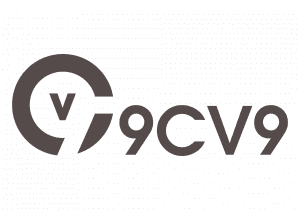


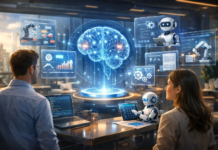






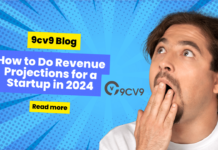




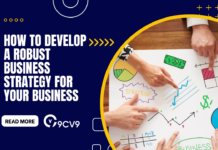






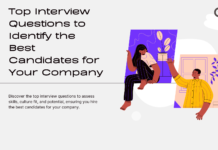
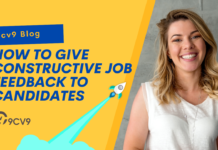

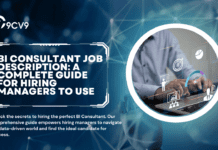





![Writing A Good CV [6 Tips To Improve Your CV] 6 Tips To Improve Your CV](https://blog.9cv9.com/wp-content/uploads/2020/06/2020-06-02-2-100x70.png)


